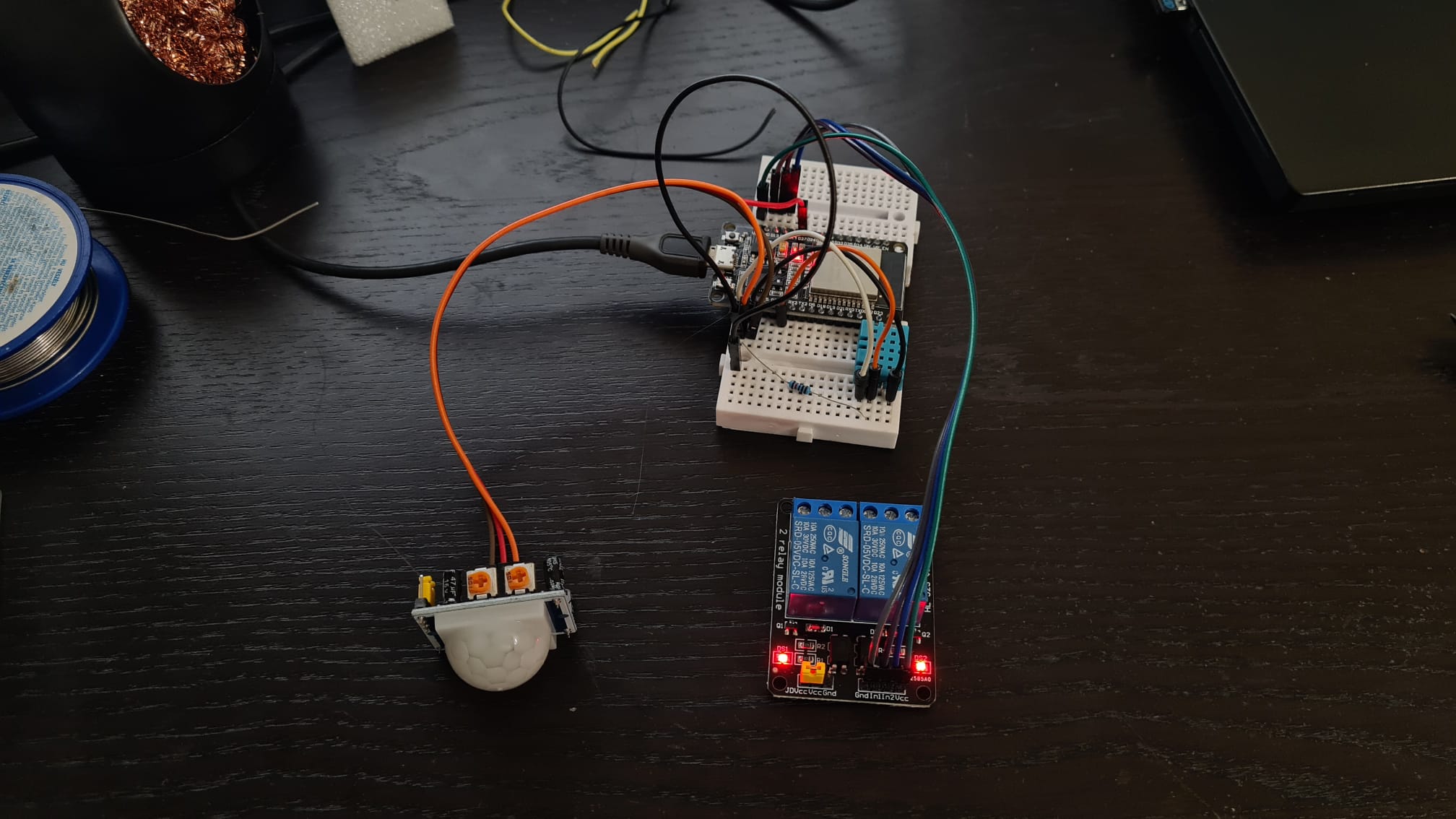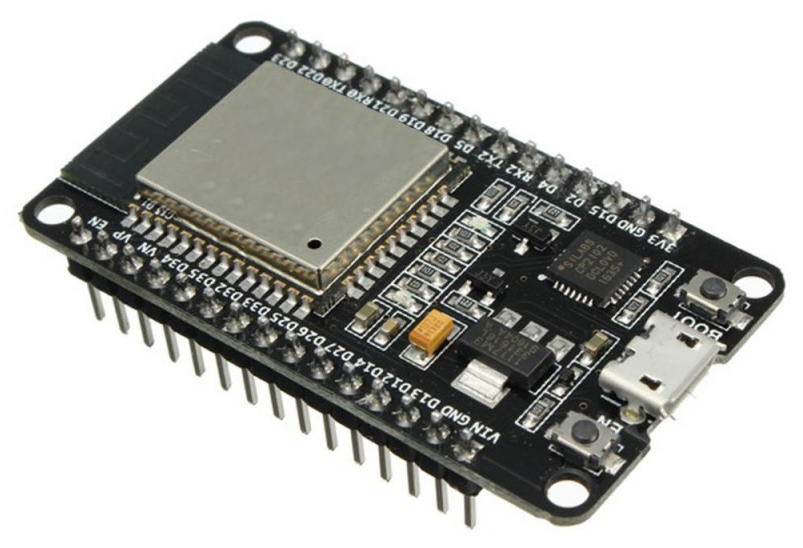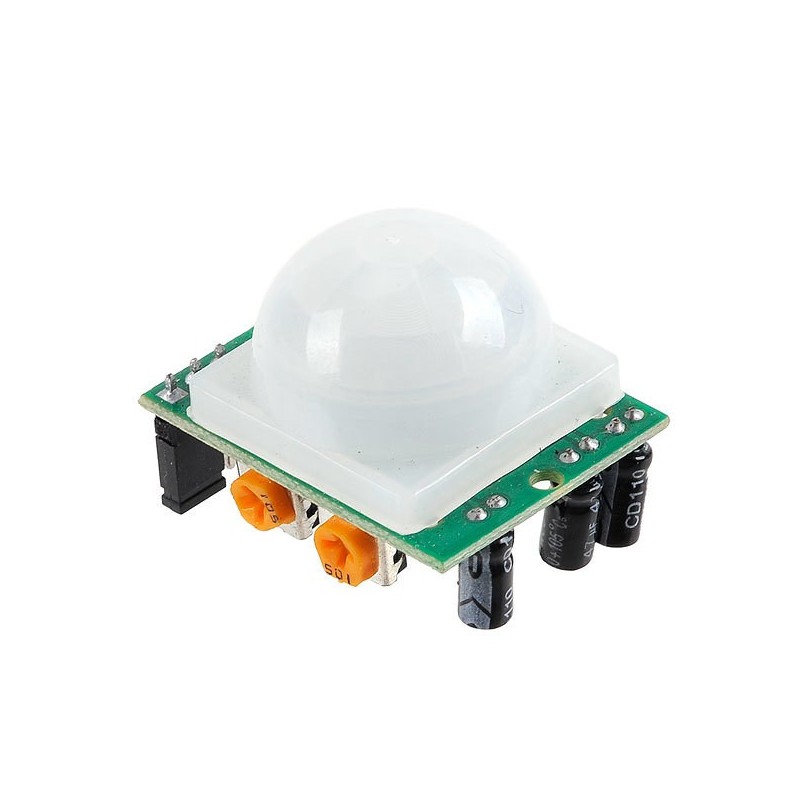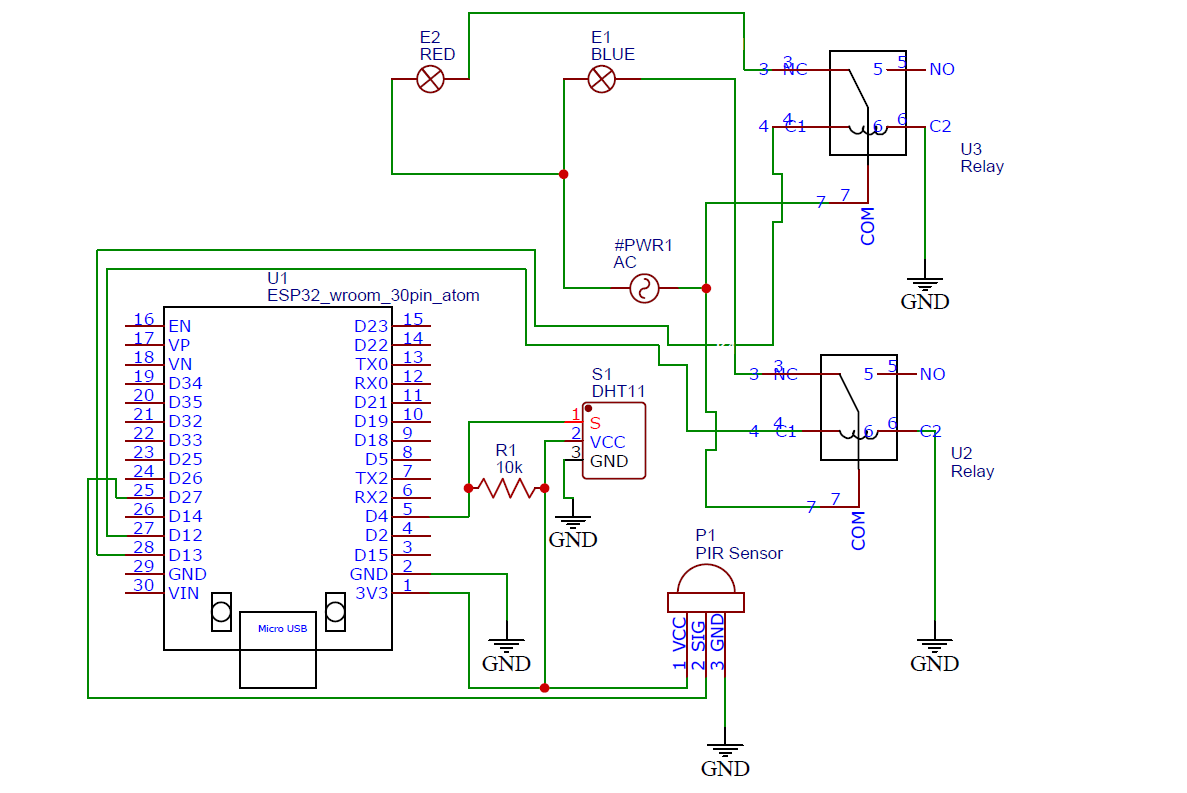Table of Contents
Smart Home Lights & Power Outlet Control
Author: Dragos Macovei ACES 2023
Source code on Github:
Firebase App
Presentation link
Description
This project explains how to control sockets and lights in houses of any size in order to save more energy and enjoy your comfort. An ESP32 WROOM module will be connected individually to each socket in the room using relays and there will also be 2 PIR modules in 2 different rooms. Depending on the activity detected in the house, the program will have 2 states:
- Manual Mode, when the user is at home: all the switches are controlled by the user. Moreover, if the PIR sensor doesn't detect movement for more than 30 minutes, it switches to Auto Mode.
- Auto Mode, when the user is not home: all the sockets are turned off (except those that the user wants to keep permanently on) and all the lights are turned down.
When the user enters the house or he gets out of bed in the morning, he will be detected by the PIR sensor, all elements will be turned on and the program will switch to Manual Mode.
Hardware
Hardware components play an important role in electronic projects by providing physical functionality, improving performance, increasing safety and reliability, and facilitating the development and testing process. Keeping these ideas in mind, I chose the following components.
- The ESP32 WROOM is a microcontroller produced by Espressif Systems that is based on the 32-bit dual-core Xtensa LX6 microprocessor. The WROOM variant of the ESP32 comes with integrated Wi-Fi and Bluetooth capabilities, making it a popular choice for IoT and other wireless applications. Overall, this board is a powerful, versatile, and low-power microcontroller that is well-suited for IoT and wireless projects. It's a great choice for many use cases, from low-power sensors to high-performance applications
- A PIR (Passive Infrared) sensor is a type of sensor that detects motion by measuring infrared (heat) radiation emitted by objects in its field of view. It is commonly used in security systems, automatic lighting control systems, and other applications that require motion detection. PIR sensors have several advantages over other types of motion detectors, such as low power consumption, reliability, and a wide field of view. They are also relatively inexpensive and easy to use.
- The DHT11 sensor is a low-cost digital temperature and humidity sensor that is commonly used in various applications such as home automation, weather stations, and HVAC systems. The sensor uses a capacitive humidity sensing element and a thermistor to measure the surrounding air's humidity and temperature.
- This Relay module with 2 5V channels is used to take control of devices in the house that operate at high voltage. It can be easily controlled by a microcontroller and is compatible with Arduino.
The final diagram of all the components can be seen below and was made with the help of the EasyEDA program.
Software
Libraries
- AsyncTCP - This is a fully asynchronous TCP library, aimed at enabling trouble-free, multi-connection network environment for Espressif's ESP32 MCUs.
- DHT Sensor - An Arduino library for the DHT series of low-cost temperature/humidity sensors.
- Firebase-ESP-Client - The managed, complete, fast and secure Firebase Client Library that supports ESP8266 and ESP32 MCU from Espressif
Conclusions
A module has been implemented that registers the temperature and detects movement in a room. Depending on the presence/absence of the person in the room, the program switches to manual or auto mode.





